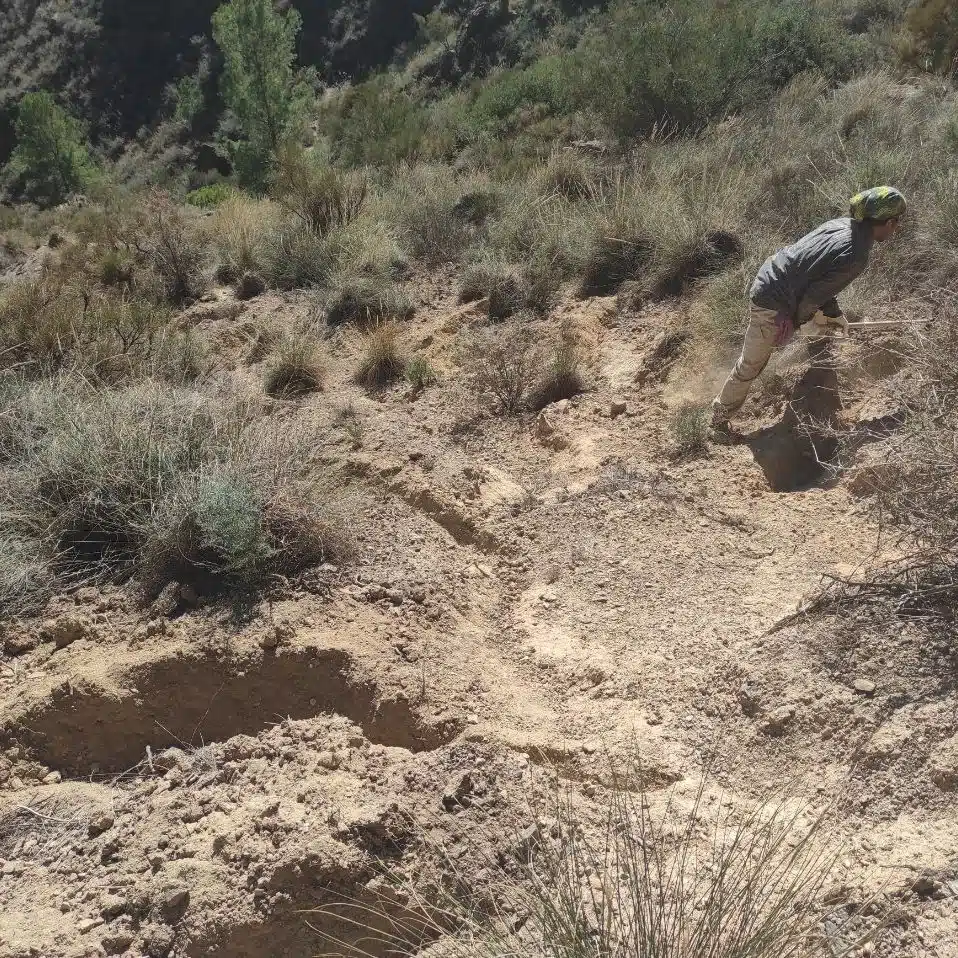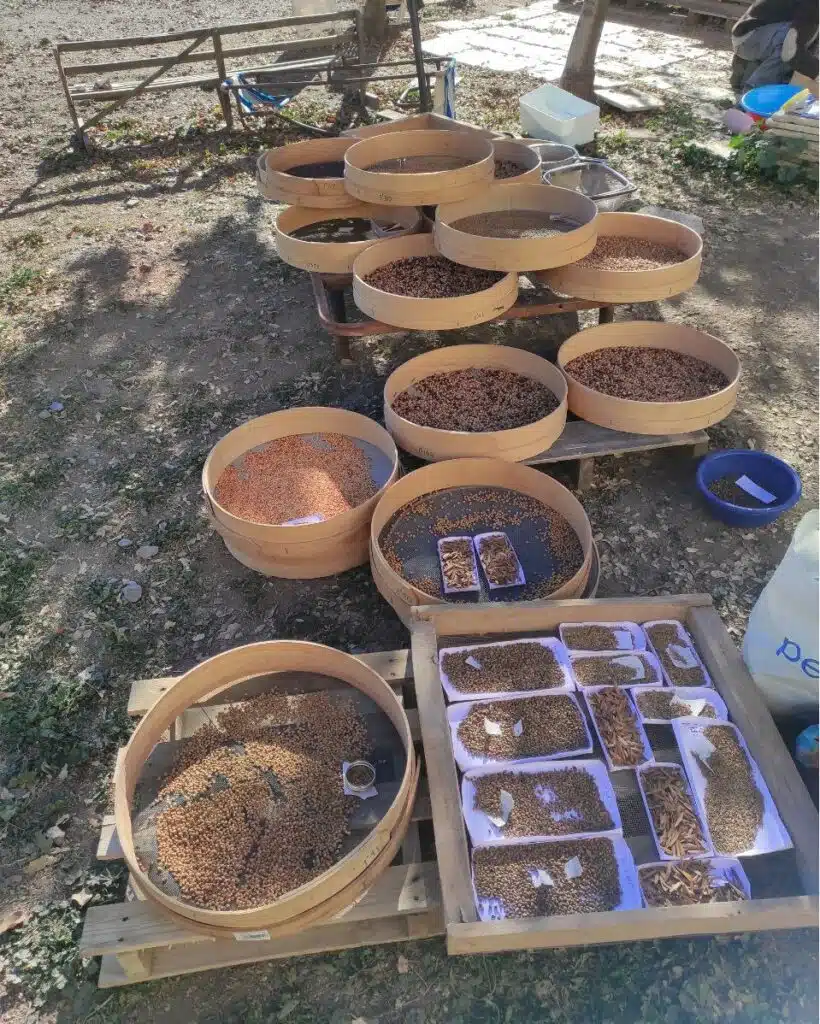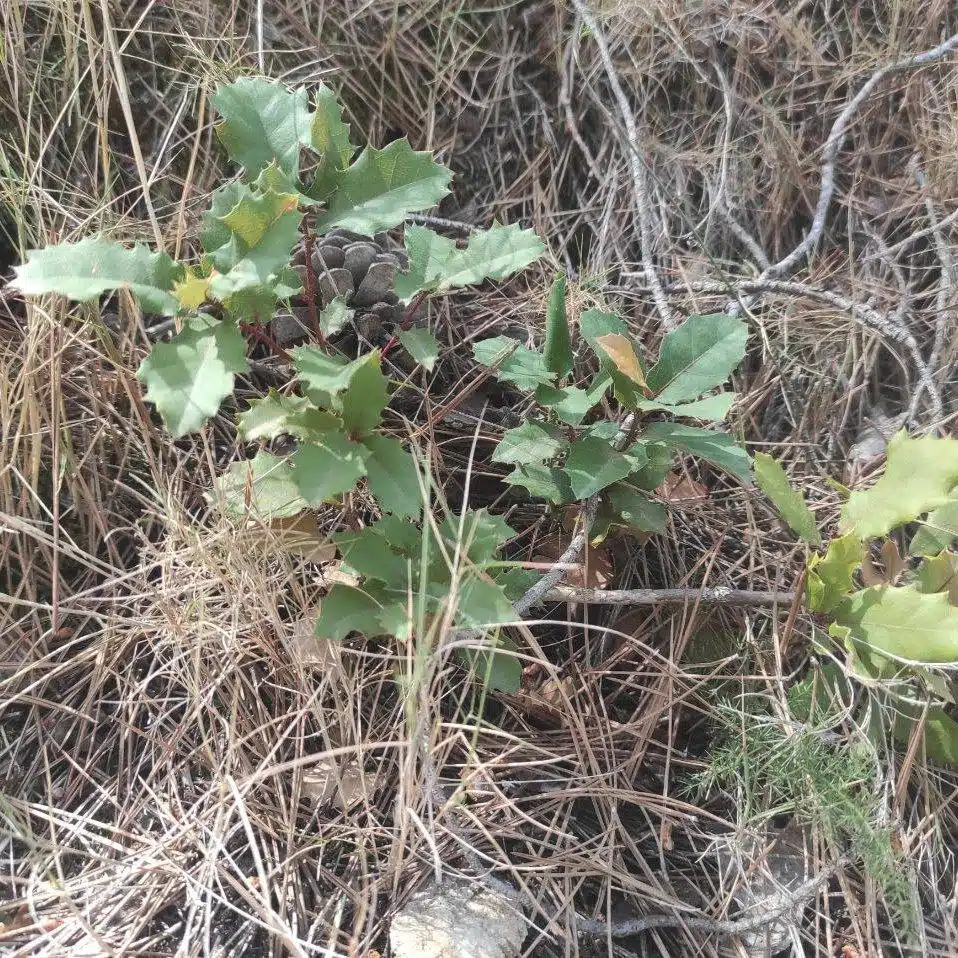At the beginning of February, at Semillistas, we carried out experimental sowings of orthodox seeds in Los Guájares. These sowings are part of an ongoing learning process about how plants germinate and establish themselves in a forest that is in the process of regeneration after a fire.
Our main objective was to observe how light influences the germination and development of plants. To do this, we planted at different points around the nurse plants, to the north, south, east and west, comparing how differences in sunlight affect their growth. We also wanted to check whether the seeds had enough time to germinate depending on their orientation.
In these sowings we included species such as Aleppo pine (Pinus halepensis), mastic (Pistacia lentiscus), blackthorn (Rhamnus lycioides) and broom (Retama sphaerocarpa). All seeds received priming treatments to accelerate germination, taking advantage of the rains that fell weeks before. In addition, each species was surrounded with its specific endomycorrhizae, which we had previously harvested in Sierra Lujar, in the hope of favouring the symbiosis between fungi and roots from the very beginning.
The importance of these tests lies in understanding not only how many seeds manage to germinate, but how many plants survive after the summer, when conditions become harsher. This will allow us to better adjust future plantings, selecting species and techniques that maximise the chances of success.
In Los Guájares, after the fire, there are areas with good natural regeneration: esparto grass, blackthorn, heather, rosemary, rockroses and gorse have resprouted or gone to seed strongly. However, there are also large clearings where the rains washed away the soil and nothing has sprouted. This is where we are focusing our efforts, seeking to open the way for new plants.
Our strategy for the future is to plant acorns (Quercus ilex and Quercus coccifera) in the first years after the fire, before wild boars and mice return to the area and predation increases. Once that happens, we will move on to sowing orthodox seeds, which are smaller and less vulnerable to these animals.
The road is long and full of learning. These experimental sowings are just the beginning of a process to better understand how to accompany nature in its own regeneration. We continue to observe, measure and learn, with a view to more resilient and biodiverse forests in the future.




